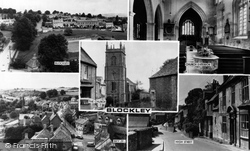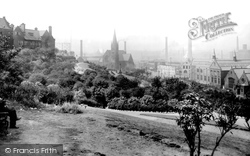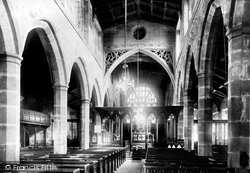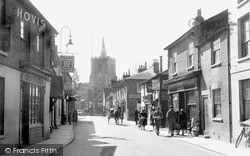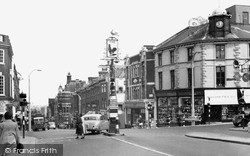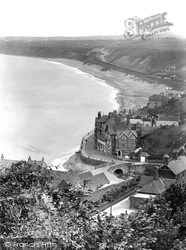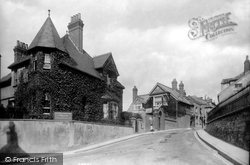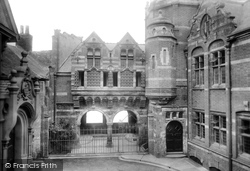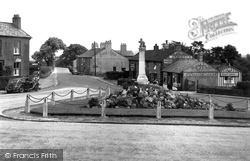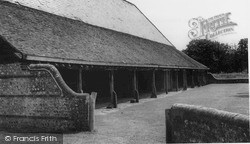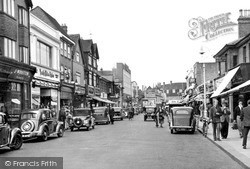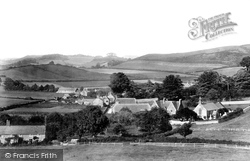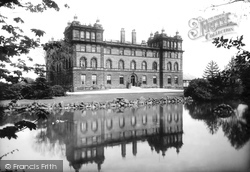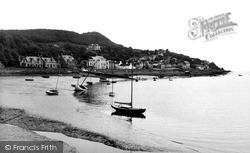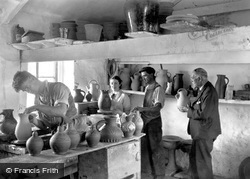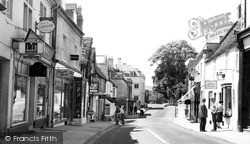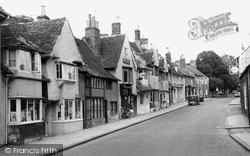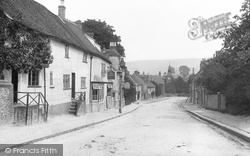Places
36 places found.
Those places high-lighted have photos. All locations may have maps, books and memories.
- Pentre-cwrt, Dyfed
- Pentre Halkyn, Clwyd
- Pentre, Mid Glamorgan
- Ton Pentre, Mid Glamorgan
- Pentre, Powys (near Llangynog)
- Pentre, Powys (near Guilsfield)
- Pentre, Powys (near Bishop's Castle)
- Pentre, Clwyd (near Mold)
- Pentre, Clwyd (near Ruabon)
- Pentre, Shropshire (near Chirk)
- Pentre, Clwyd (near Hawarden)
- Pentre, Dyfed (near Pontyates)
- Pentre, Powys (near Newtown)
- Pentre, Clwyd (near Chirk)
- Pentre, Clwyd (near Ruthin)
- Pentre, Clwyd (near Mold)
- Pentre, Shropshire (near Oswestry)
- Pentre, Powys (near Welshpool)
- Pentre, Clwyd (near Mold)
- Pentre, Shropshire (near Forton)
- Burntwood Pentre, Clwyd
- Pentre Berw, Gwynedd
- Pentre Hodre, Shropshire
- Pentre Llanrhaeadr, Clwyd
- Pentre-celyn, Clwyd
- Pentre Broughton, Clwyd
- Pentre Gwynfryn, Gwynedd
- Pentre Maelor, Clwyd
- Pentre-clawdd, Shropshire
- Pentre Galar, Dyfed
- Pentre Llifior, Powys
- Pentre-cefn, Shropshire
- Pentre-Gwenlais, Dyfed
- Pentre-Poeth, Dyfed
- Pentre Cilgwyn, Clwyd
- Pentre Morgan, Dyfed
Photos
98 photos found. Showing results 2,621 to 98.
Maps
316 maps found.
Books
2 books found. Showing results 3,145 to 2.
Memories
1,250 memories found. Showing results 1,250 to 1,250.
Captions
3,594 captions found. Showing results 3,145 to 3,168.
No longer a school, it was preserved as a frontage to a shopping centre.
With such an assortment of architectural styles in the town centre, there is always a building or detail to please the eye. This photograph looks towards Church Street.
Campden but not distant enough to develop into a market town itself, Blockley harnessed the water power of its deeply cleft valley early on in its history, and became famous as a silk throwing centre
The Red Lion Inn got a new facade on its western side, prolonging its life until a Compulsory Purchase Order forced its demolition in 1973, ready for the new shopping centre and market.
Mills crowd in towards the town centre, following the course of the river Roach and its tributary the Spodden. Textile mills reached their peak of prosperity at this time.
The chancel screen incorporates some 15th-century work, and the side chapels, as one might expect for a church at the centre of a large parish, used to belong to the prominent gentry families in the
Barrett & Sons, bakers, proudly advertise that they sell Hovis bread (left), and the Kings Arms public house that it serves Benskins bitter (centre right).
Also note the Provident Clothing and Supply Co Ltd just behind it, and the decorator on his ladder (centre left).
Factories were built for carding and spinning machines, and the town became a major centre for handloom weaving. Robert Owen, the social reformer, was born here and died here in 1858.
At this major junction of Cheam Road, Carshalton Road and the steep High Street, the splendid and ornate sign of the Cock Hotel with the Courage Brewery rooster mounted above sits in the centre.
The Sandsend Hotel (1899), centre, so dependent on rail links, has now been converted to apartments.
Further up the street are the National Schools, dated 1892 (centre), behind the girl sitting on the steps.
The shot is seawards (centre), through the arches, from the Guildhall (left).
This is the T-junction at the centre of Hurst Green.This stretch of road has a history all of its own. In 1826 J C Macadam laid a new road surface here as a trial.
There are many attractions here, including a physic garden, a rope museum and an Iron Age centre.
The tall building centre left is the Art Deco-ish Burton's - its foundation stones were laid by members of the family in 1938 - and on the right is W H Smith in a heavily-corniced neo-
Looking north-east, from Hyde Hill, we can see Hyde in the foreground (left) and Berry Farm and Walditch hamlet in the middle distance (centre).
Guests were encouraged to walk up to the nearby White Wells and the Tarn, and because of this proximity to the Ilkley Moor, Wells House quickly established itself as a popular recuperation centre.
By the 1920s shipbuilding had declined, and in the years since Kippford has become a popular yachting centre, its harbour and channel busy with visiting boats in the summer months.
On the right, William Jenkins, the proprietor of Claypits Pottery, holds a jug ready for his nephew Tom Jenkins (centre) to decorate – Tom was to take over the business in 1939.
Kenelm's death made his grave second only to Thomas Becket's as a site of pilgrimage during the Middle Ages, and Winchcombe one of the region's earliest tourist centres.
The house occupied by the courageous window-cleaner (centre) bears a 1716 datestone, and its neighbour (then, as now, housing the Royal Air Force Association) a datestone for 1663.
He was passionately concerned for the fate of shipwrecked sailors, and gave them proper burials - in the centre is the white figure-head of the brig 'Caledonia' that broke up in 1842.
It is now (in 2000) a tourist information centre. The Two Brewers on the left is now (in 2000) an Italian restaurant, but the White Swan beyond is still a pub.
Places (57)
Photos (98)
Memories (1250)
Books (2)
Maps (316)




